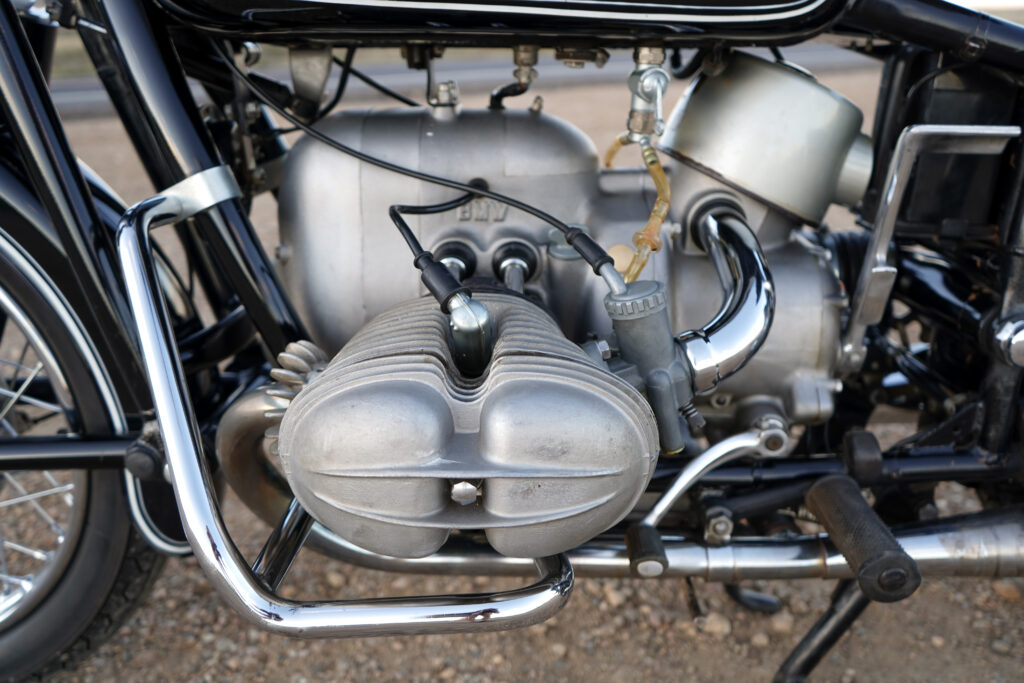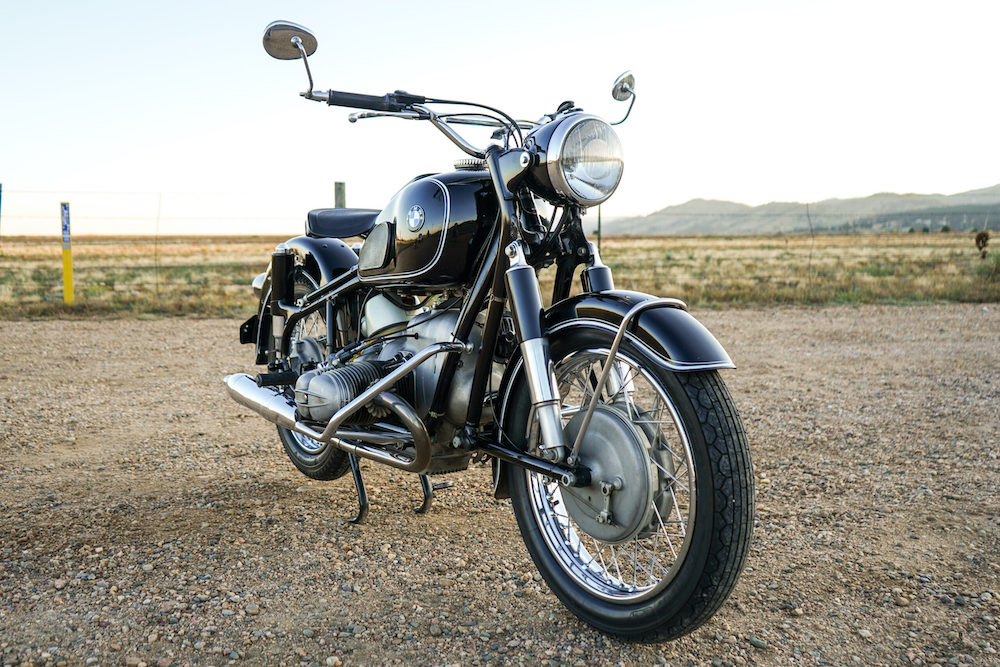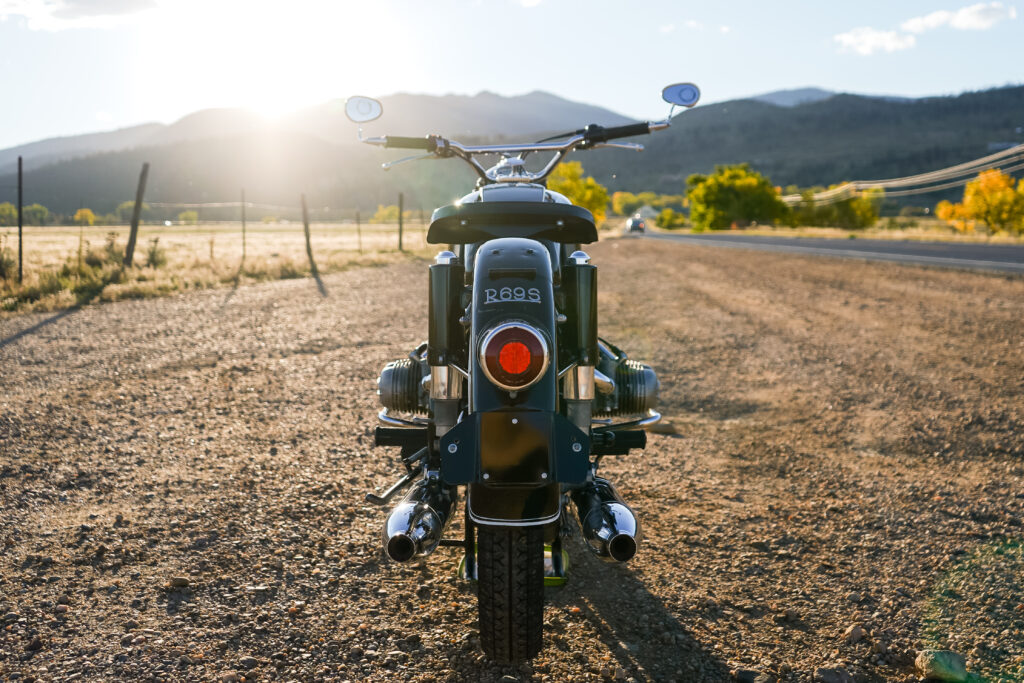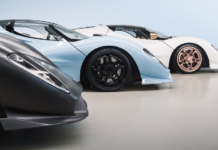There is no electric starter, just a polished kickstart lever rising vertically from the left side of the bike. I stand to the side, swiftly yet softly kicking it down, perpendicular to the bike and out. A well-tuned BMW doesn’t require much force—even a fluid hand push can ignite the gases in the boxer twin-cylinder engine. This is my introduction to a motorcycle that for the cognoscenti needs no introduction—the 1967 BMW R69S, arguably the most reliable and effortless touring bike from the 1960s, and, just maybe, the best motorcycle ever made.

That’s a heady statement, but the fact is that the market has taken notice of these BMW cruisers. Now considered a blue-chip bike worth investing in—not just riding on long journeys—these bikes have surged in value of late, some more than doubling their worth since 2020 to around $50,000 for the best examples. That’s a hefty sum for an old motorcycle. Even BMW capitalized on the popularity of this bygone era, launching the R18 in 2020, a new cruiser designed to evoke their cross-country bike roots. Enjoyable though that new bike may be, today I am after the real thing.
The engine fires and my visceral interaction with the R69S begins in earnest. At idle, the engine’s arrangement—crankshaft running front to rear and opposed cylinders protruding on either side above the rider’s feet—gently twists the bike with each ignition in the combustion chambers. I swing a leg over the low seat and begin my unforgettable journey as rider and owner.
After it gets to temperature, I pull the clutch lever and tap the shifter down into first. It engages with that metallic clunk, a feeling and noise familiar to riders of BMWs old and new. With an audible whir, the clutch slowly engages and the bike surges forward. At this point, it’s just me, the fresh Colorado air, the scenery, and sensations of the motorcycle beneath.
The term “/2 BMW” (pronounced “slash-two”) is catch-all term nowadays for BMW’s top of the line twins from 1956 to 1969, rather than merely referring to the actual /2 bikes. From 1956 until 1960 they were only called the R50 (500cc, touring/sidecar), R60 (600cc touring/sidecar), and R69 (600cc, sport with higher horsepower). 1960 brought a slew of updates, most of which focused on improving the bike’s power and reliability. These new models were called the R50/2, R60/2, R50S and R69S. BMW modernized them again in 1967 with the same telescopic forks that would feature on the upcoming /5 series. The bikes now went under the monikers of R50US, R60US, and R69US. Each model and update through these years provides its own unique riding experience, especially when fitted with different seats and handlebars.

All were offered with either rubber Denfeld saddle seats and two-up bench seats (which came in two widths) from the factory, and each provides a differing riding experience. The solo saddle seats are preferred nowadays for looks by many (let’s face it, these help make the /2 one of the coolest looking motorcycles ever) but are more upright and provide less of a connected riding feel; they tend to wiggle a little bit and provide a more spongy ride. This isn’t a bad thing at all on a comfortable cruiser like the /2. If anything, I prefer the feel of the saddle over the bench. It’s also a more unique look, and that’s half the fun. Riders can further differentiate the look and feel of their /2 with low sport bars without a cross brace and higher, more relaxed ones with a brace.
It’s hard to imagine a bike that can be worth upwards of $50k today being ridden hard across the country in the ’60s, but when you realize Ferrari 250 GTOs were once thrashed on the race track and passed between owners like the used cars they were, it makes sense that the best touring motorcycle of the day was going to be used and trusted as one. The R60 became the first motorcycle to ride from the Arctic Circle at the top of Alaska to the tip of South America when Danny Lisko completed the journey in the 1960s. Even the 1967 BMW R69S pictured above has touring pedigree. It was bought new in 1968 from Recreation Equipment Inc. in Denver and quickly was put to work as intended. The husband and wife owners took it across the country and from Colorado to Canada. Many owners on more modern bikes today wouldn’t even consider trips like that.
Despite most having lived out their touring bike duties to the fullest, it seems more /2 BMWs survive today in good original condition than other bikes from the ’60s. They’re even frequently owned by the original owner or passed down in the family. After my own time on the saddle, I’d say their longevity and duration of ownership likely stems from a combination of two things: the /2 is a bike you can trust to get you to the end of your journey, and you’re unlikely to find a mechanical companion that offers such an engaging rider/bike connection during that adventure. There aren’t a lot of other bikes out there that offer both.

The engineering on these 1960s BMWs bests bikes 20 years newer, even from the same brand, and that’s what fosters the trusting relationship between owner and machine. Even the effort you can’t see will impress you: most other bikes of the era employ ball-end cables wrapped around a disk in the throttle housing. These can stretch over time, creating slop in throttle application. On a /2, the throttle cables are linked to a tiny chain wrapped around a geared cam disc. When you twist the throttle, a gear on the throttle tube rotates the cam disc, meaning there’s no opportunity for wear or slop within the throttle housing. The /2 is the antithesis of planned obsolescence, and that’s why buyers today are undaunted when they see a /2 for sale with 20,000 miles. A ’60s Triumph 20,000 miles would be unheard of.
As one of the most collectible motorcycles ever and the most expensive of the line during the time, the R69S would logically sit atop the pedigree of the model range in terms of values. Yet the R50S, the R69S’s less powerful and less-expensive-in-the-day model, takes top honors at $48,600 compared the R69S’ $47,500. This is thanks to the R50S’ limited two-year production and its riding characteristics: many prefer the 500cc sports model due to its smoother engine.

This doesn’t mean every #1 R50S or R69S sells for that amount. Rather, these values ballpark their respective market’s averages. What’s behind the strong values #1 condition bikes? Two primary reasons: original parts are hard to come by, and production for the whole range was relatively low. For instance, while the R50US was the least expensive of the bunch, it’s also the rarest by far. A perfect #1 R50US is a unicorn among unicorns, with its production numbers representing 25% of the R50S and less than half that of R69USs. As a result, when a R50US comes up for sale, it commands a premium above its original status in the lineup.
Dig deeper and you’ll notice an evolving valuation brought by certain features. Earles fork-equipped earlier versions tend to fetch more than the US bikes because of their classic /2 look, for instance. That said, US bikes have come into their own recently and are increasingly appreciated by collectors. Don’t be afraid of them, but don’t expect them to be viewed the same by the true purists.
Considering the mechanical strength of the /2, you don’t need to worry about finding a #1 bike. Just find one specced to your taste and ride it—you won’t be disappointed. Care for your /2 like its prior owners did and it’ll thank you with years of reliability and an experience that’s truly like no other in the classic bike market.
more information: hagerty.com
Photos: James Hewitt










